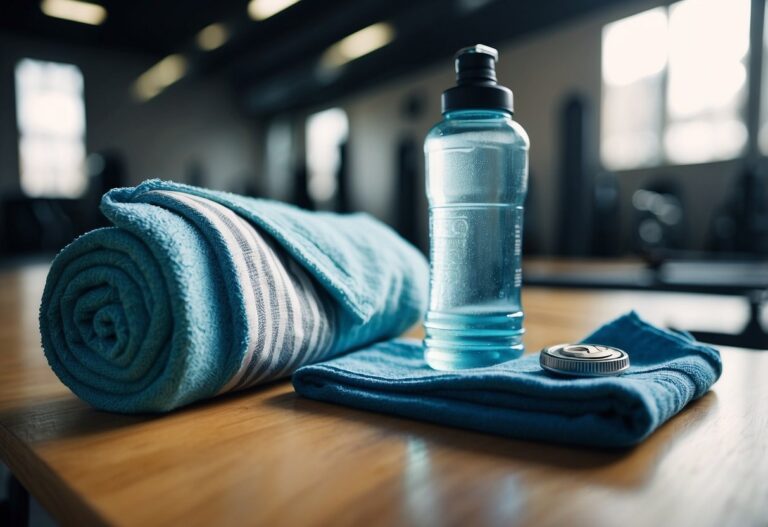Losing weight can be challenging, but having the right workout tips can make your journey much more effective and enjoyable. Whether you are a beginner or experienced, there are various strategies and exercises that can help you achieve your goals. The key is to find workouts that you enjoy and can stick with long-term, ensuring consistency and progress.

Incorporating a mix of cardio, strength training, and flexibility exercises provides a balanced approach to weight loss. This not only helps you burn calories but also strengthens your muscles and improves overall fitness. As you explore different workout options, remember that it’s about finding what works best for you.
Incorporate HIIT Workouts
You can boost your fat-burning power by incorporating High-Intensity Interval Training (HIIT) into your routine. HIIT involves short bursts of intense exercise followed by brief recovery periods. This method can help you burn more calories in less time compared to traditional workouts.
Start with simple exercises. Sprints are a great way to begin. Try sprinting for 8 seconds, then jogging for 12 seconds, and repeat for 10-20 minutes. This alternation keeps your heart rate up and maximises calorie burn.
If you’re short on time, consider doing dumbbell exercises like squats and presses for 45 seconds with 15-second rests. This full-body workout is quick yet effective.
Consistency is key. Schedule 2-3 HIIT sessions a week, each lasting around 20-30 minutes. This frequency allows your body to recover while still pushing your metabolic rate higher.
Using this method, you’ll find that even a small time investment can lead to significant weight loss results.
Stay Consistent with Your Routine
To stay consistent, pick the same time of day to work out. This helps make exercise a regular part of your schedule.
Have a trigger to remind you. For example, you could always exercise right after breakfast.
Setting realistic goals is key. Start small, such as aiming for a 15-minute walk daily.
Choose the right workout that you enjoy. This makes it easier to stick to your plan.
Visit this guide for more tips on staying consistent. Regularity is crucial in meeting your fitness goals.
Monitor your calorie intake

When trying to lose weight, it’s important to pay attention to your calorie intake. Tracking how many calories you consume can help you understand your eating habits.
Start by knowing the recommended daily calorie intake: 2,500 kcal for men and 2,000 kcal for women. If you’re aiming to lose weight, you might need to reduce your daily calorie intake by about 600 kcal.
You can use apps or smartwatches to keep track of your calories. These tools make it easier to see if you’re staying within your target.
Combining calorie reduction with exercise is also effective. For example, you might reduce your calorie intake by 250 calories and burn an extra 250 calories through physical activity.
Keeping a negative calorie balance, like 500-750 calories per day, can help you achieve weight loss goals of 1-2 pounds per week.
Focus on Whole Foods
When aiming for weight loss, whole foods are your best friend. They are less processed and generally more nutritious than their processed counterparts.
You can eat a variety of options, including whole grains, fresh fruits and vegetables, lean meats like chicken, turkey, and fish, as well as nuts and seeds. These foods provide essential nutrients that your body needs.
Incorporating whole foods into your diet can help you feel fuller for longer. For example, a breakfast of whole-grain cereal or oats can give you energy and keep you satisfied until lunch.
Stay Hydrated
Staying hydrated is essential for your workout routine and weight loss journey. Drink plenty of water before, during, and after your workouts. Aim to sip water every 15 to 30 minutes while exercising.
If your workouts are intense or last over an hour, consider drinks with electrolytes. These help replace lost minerals and keep you energised.
On less active days, try to drink half your body weight in ounces of water. This helps maintain overall hydration and supports your body’s functions. Adjust your fluid intake based on the workout’s intensity and duration.
Prioritise Sleep
Getting enough sleep is crucial when you’re trying to lose weight. If you’re not well-rested, it’s harder to make healthy choices and find energy for workouts.
A good night’s sleep helps your body recover and repair. During deep sleep, your body regulates hunger hormones, making it easier to avoid overeating the next day.
Try to maintain a consistent sleep schedule. Go to bed and wake up at the same time every day. It might be tempting to stay up late, but it can disrupt your routine and impact your weight loss efforts.
Creating a bedtime routine can also help. Activities like reading or taking a hot bath can signal your body that it’s time to sleep. Avoid screens before bed to improve sleep quality.
Remember, both sleep and exercise are important. Balance your schedule so you’re not sacrificing one for the other. Ensuring you get enough rest can make your workouts more effective.
Combine Cardio and Strength Training
To lose weight effectively, you should include both cardio and strength training in your routine. Combining these exercises helps burn more calories and build muscle, which boosts your metabolism.
Cardio exercises like running, cycling, and swimming help your body burn fat. They raise your heart rate and improve your cardiovascular health.
Strength training focuses on building muscles. Lifting weights, doing push-ups, and using resistance bands are great for this. As you gain muscle, your body burns more calories, even when at rest.
Try mixing both types in your workouts. For example, do strength training for 30 minutes followed by 20 minutes of cardio. Alternatively, you can alternate between the two every other day.
Another great option is circuit training. This involves doing a strength exercise for 45 to 60 seconds and then a cardio exercise for 30 seconds. Repeat the cycle a few times. This keeps your workouts varied and engaging.
When you combine both methods, you’re likely to see faster and more sustainable weight loss results. Your body adapts to the mixed demands, and you may find the variety keeps you more motivated and less likely to get bored.
Track your progress
Keeping an eye on your progress is key to staying motivated. Start by measuring your waist, hips, and arms. Use a tape measure to take these measurements once a week or month. Seeing the inches drop can be super encouraging.
Another great way is to keep a workout journal. Write down your sets, reps, and the weights you lift. This lets you spot improvements over time and feel proud of your hard work.
You might also try a fitness tracker. These gadgets can monitor your steps, calories burned, and even your heart rate. They provide a clear picture of your daily activity levels and help you tweak your workouts for better results.
Don’t forget to take photos. Sometimes progress can be gradual and hard to notice. Taking photos of yourself every few weeks lets you see physical changes that the scale might miss.
Lastly, check your clothes’ fit. How your jeans or shirts fit can be a more accurate measure of your progress than numbers on a scale. Feeling comfortable and confident in your clothes is a big win.
Tracking your progress isn’t just about numbers. It’s about seeing how far you’ve come and staying motivated for the journey ahead. Keep it simple and consistent for the best results.
Maintain a Balanced Diet

Eating a balanced diet is key to losing weight effectively. Aim to include a variety of fruits, vegetables, whole grains, and lean proteins in your meals. This ensures you get essential nutrients without excess calories.
It’s helpful to read food labels. Look for items with more green colour coding for healthier options. Foods with fewer processed ingredients are generally better for you.
Try to eat at least five portions of fruit and vegetables each day. This not only helps with weight loss but also boosts your overall health. Incorporate these habits into your daily routine to see results.
Include Rest Days
Rest days are just as important as your workout days. They give your muscles time to heal and grow stronger. Without enough rest, you risk injury, which could set back your progress.
On rest days, consider light activities. Gentle walks or stretching can keep you moving without straining your body. This helps with recovery and keeps your routine enjoyable.
Make sure to listen to your body. If you feel extra tired or sore, take a day off. Resting well can make a big difference in your long-term success and feeling good overall.
Understanding the Basics of Weight Loss Workouts
To lose weight effectively, it is crucial to combine different types of exercises. Cardiovascular workouts help burn calories, while strength training builds muscle, increasing your metabolism. Balancing both can maximise your efforts and lead to better results.
The Role of Cardiovascular Exercise
Cardiovascular exercise, like running, cycling, or swimming, helps you burn calories quickly. It increases your heart rate and improves your cardiovascular health. Engaging in activities such as these can help you lose weight by burning a significant number of calories.
For example, running at a moderate speed can burn 500 calories per hour depending on your weight and intensity. Incorporating cardio into your routine 3-5 times a week can be very effective. Even brisk walking can be a good start, especially if you are a beginner.
Using mixed-intensity cardio workouts, like interval training, can also enhance fat burning. Try alternating between high-intensity bursts and lower-intensity recovery periods. This keeps your body challenged and can lead to quicker results.
Importance of Strength Training
Strength training is essential for building muscle and boosting your metabolism. Muscles burn more calories than fat, even at rest. This makes strength training especially important when working on weight loss.
Lifting weights, using resistance bands, or even bodyweight exercises like push-ups and squats can help you build and maintain muscle. Focus on different muscle groups throughout the week to ensure a balanced workout. For beginners, a routine might include strength training two days a week.
Each session can consist of exercises targeting major muscle groups. Aim for multiple sets with 8-12 repetitions per exercise. Over time, gradually increase the weight or resistance to continue challenging your muscles.
Balancing Different Types of Workouts
Balancing cardio and strength training is key for effective weight loss. This not only helps you burn calories but also builds muscle, improves endurance, and keeps your routine varied. A balanced workout might include strength training two days a week and three days of cardio.
Adding flexibility exercises, like yoga or Pilates, can improve your range of motion and prevent injuries. These exercises help your body recover and stay agile.
Creating a balanced workout plan ensures you are not overworking any one part of your body and keeps your fitness journey interesting.
Optimising Your Workout Routine for Weight Loss
When it comes to losing weight, having a structured and realistic workout plan can make a huge difference. By setting achievable goals and creating a balanced exercise schedule, you can maximise your efforts and see better results.
Setting Realistic Goals
Start Small: Instead of aiming for drastic changes, set smaller, more achievable goals. For example, aim to lose 1-2 pounds per week. This helps keep you motivated and prevents burnout.
Be Specific: Define clear and specific goals. Instead of saying “I want to lose weight,” say “I want to lose 10 pounds in three months.” This gives you a clear target to work towards.
Track Progress: Keep a record of your progress. Use a journal or an app to note down your workouts, weight, and how you feel. This can help you stay on track and make adjustments if needed.
Celebrate Milestones: Reward yourself when you hit small milestones. This could be a new workout outfit or a relaxing day off. Celebrating keeps you motivated.
Creating a Balanced Exercise Schedule
Include Cardio: Cardiovascular exercises like running, cycling, or swimming are great for burning calories. Aim for at least 150 minutes of moderate-intensity or 75 minutes of high-intensity cardio per week.
Strength Training: Incorporating strength training is key. Exercises like dumbbell deadlifts target multiple muscle groups and help you burn more calories even at rest. Aim for two sessions per week.
Flexibility and Recovery: Don’t forget about flexibility and recovery. Activities like yoga or stretching improve your range of motion and can prevent injuries. Also, ensure you get enough rest days to allow your muscles to recover.
Mix It Up: To prevent boredom, vary your workouts. Try new activities or alternate between different exercises. This keeps your routine exciting and challenges your body in new ways.
By following these tips, you can create an effective workout plan that helps you reach your weight loss goals.







